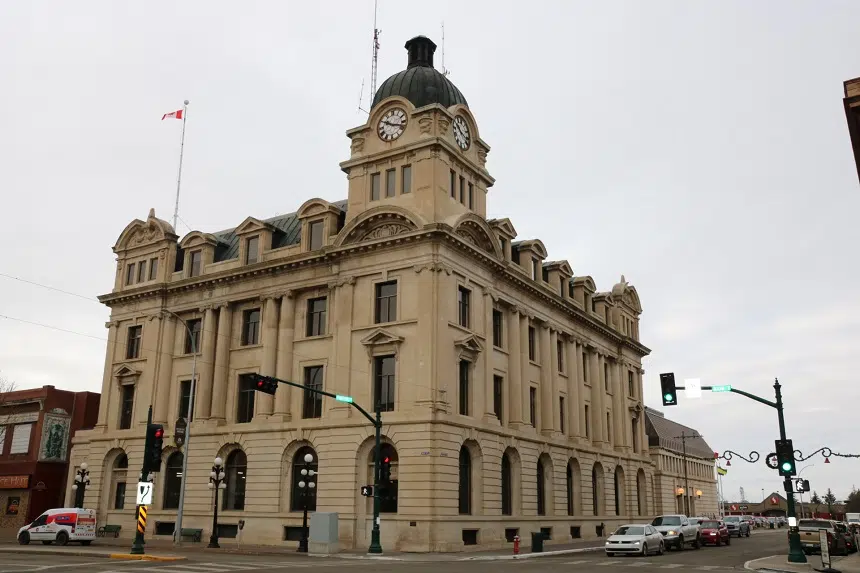By Shawn Slaght
The Saskatchewan Assessment Management Agency (SAMA) is defending its cap rate model for assessing commercial properties in Moose Jaw.
While SAMA did not supply an interview, Discover Moose Jaw was sent a prepared information sheet on how property assessments and cap rates are evaluated.
The fact sheet noted that “SAMA successfully supported our assessment valuation models in Moose Jaw at the Saskatchewan Municipal Board in 2021 and with the Moose Jaw Board of Revisions in 2022.”
SAMA says all assessments in Saskatchewan are retrospective, so the date of valuation is in the past. For instance, property values for 2021 to 2024 reflect the market conditions as of a base date of Jan. 1, 2019.
“In using mass appraisal, property assessment service providers are concerned with valuing the property itself, not the business,” the information sheet said.
SAMA uses a property income approach for commercial properties and apartment buildings because it “provides the most fair, reliable, and accurate assessed values for commercial properties and rental apartments in areas where there are active leave and rental markets.”
The income approach takes in the property’s annual rent income and compares it to the property’s selling price. This comparison is known as a capitalization rate or cap rate.
Some of this information is gathered from business report forms that SAMA sent out for businesses to voluntarily fill out so SAMA has accurate information.
SAMA says similar properties are then grouped together for assessment purposes. Individual cap rates from property sales over the four-year re-evaluation period are then used to set a cap rate for all properties in those groups. SAMA applies the base rent value, and divides it by the annual predicted rent by their adjusted sale price to come up with the cap rate.
So why does Moose Jaw have several different cap rates for commercial properties, while cities like Regina have one flat cap rate? According to SAMA, Moose Jaw’s local commercial property sales leading up to the base date showed there were different markets for different types of commercial properties.
“The cap rates that are applied to different property types reflect the market for those property types,” said SAMA’s information sheet.
According to documents business owner Bernie Dombowsky supplied to Moose Jaw city council, there are about 17 different groups in Moose Jaw with cap rates ranging from 3.09 per cent to 9.3 per cent. Generally speaking, the lower the cap rate percentage, the more property taxes you will pay.
Retail and convenience stores with a footprint of 2,800 square feet or smaller have a cap rate of 3.09 per cent, while medical offices, high-rise offices, funeral homes and banks in good and best conditions have a cap rate of 9.3 per cent.
It was noted on the fact sheet that when the re-evaluation cycle was introduced in 1997, tools were introduced to help municipalities mitigate any major shifts between cycles. One of those tools for cities was a designed phase-in approach in significant assessment changes and taxation shifts.
When it comes to the audit process, SAMA says its Quality Assurance Division is independent of the rest of the agency. It has no involvement in property assessments or setting policies regarding property assessments.
The Quality Assurance Division carries out two audits yearly and one audit on a case-by-case basis.
The Confirmation Audit reviews the accuracy and compliance of a municipality’s assessment roll on a yearly basis.
The Primary Audit is also done on a yearly basis. It reviews the compliance of appraisal levels for improved residential or commercial properties that have been sold.
“Both confirmation and primary audits must successfully pass in order for Quality Assurance to recommend the municipality’s roll for confirmation by the SAMA Board of Directors,” the information sheet said.
The Secondary Audit, which is what the City of Moose Jaw is recommending Quality Assurance look at, is a detailed audit focused on “egregious statutory non-compliance.” There is no process for municipalities to request a secondary audit directly.
“If concerns are brought forward to the Managing Director of Quality Assurance, or the SAMA Board, and those concerns warrant a further investigation, the SAMA Board at the request of the Managing Director of Quality Assurance will instigate a preliminary investigation that would determine if a secondary audit is required,” SAMA said.
Property assessment audits and assessment roll confirmations are available for viewing on SAMA’s website.







